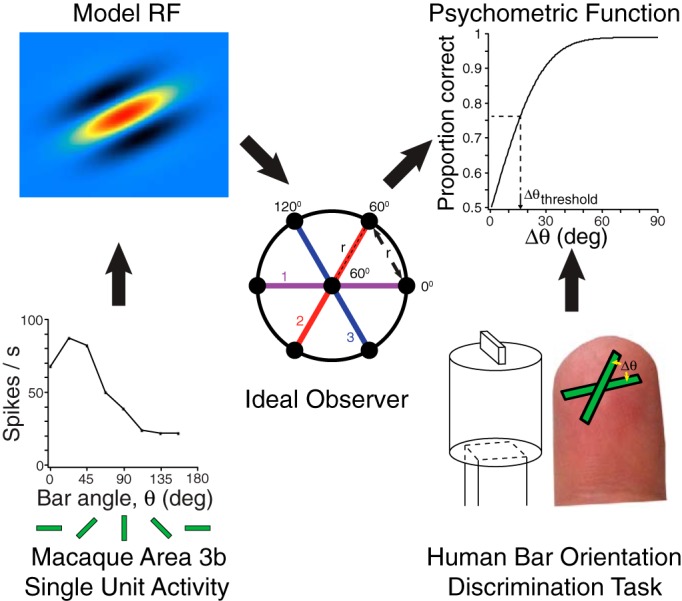Fig. 1.

Logic of the study. For each of 42 area 3b neurons, spike activity (bottom left) was fit to a model receptive field (RF) structure (top left), produced from a spatial distribution of weights representing the influence of slowly adapting type 1 (SA1) afferent activity on the cortical neuron. An ideal observer (center) was provided copies of the model RF. Black dots indicate center locations of SA1 RFs in a magnified view of the simulated fingertip. The fixed SA1 RF spacing (r) constrained the number of cortical RF orientations to a maximum of 3 (purple, red, and blue lines). Multiple RF copies were permitted at each orientation. Human and ideal observers performed a 2-interval, forced-choice (2IFC) orientation discrimination task (bottom right). On each trial, 2 bars of equal length, but differing in orientation, sequentially contacted the fingertip. A schematic drawing is shown of 1 of the bars used to stimulate the human fingertip. The observer indicated which bar was perceived to be more horizontal. The psychometric function (top right) related angular difference (Δθ) to the observer's proportion correct, from which a 76% correct performance threshold was extracted (dashed lines; ∼16° in this example). We determined with which RF types and configurations the ideal observer's psychometric function best matched those of the humans.
